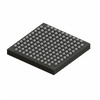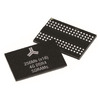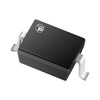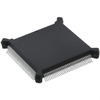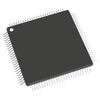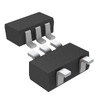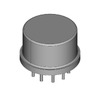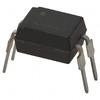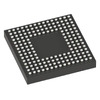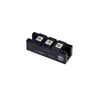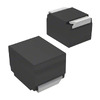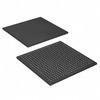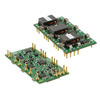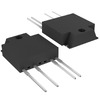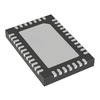The 500 Ohm Resistor: Key Features & Practical Uses
In the realm of electronic design and circuitry, the 500 Ohm resistor stands as a cornerstone component, basic for managing and manipulating electrical currents across a spectrum of devices and systems. With a resistance value finely tuned to 500 Ohms, this resistor plays a key role in controlling the flow of electrons, thereby ensuring the stability, efficiency, and safety of electronic circuits.Catalog

Figure 1: 500 Ohm Resistor
Role and Function of a 500 Ohm Resistor
A 500-ohm resistor is a dangerous component in electronic circuits, designed to limit and control the flow of electrical current. Its specific resistance value of 500 Ohms determines how much it resists the movement of electrons, which in turn influences how electrical energy is managed within a system.
The main purpose of a 500 Ohm resistor is to manage current levels, adjust signal patterns, divide voltages, and set operating conditions for other electronic parts like transistors or integrated circuits. These functions are grounded in Ohm’s Law, which states that the voltage (V) across the resistor is equal to the current (I) multiplied by its resistance (R). In other words, if you know how much current is flowing through the resistor, you can predict the voltage drop it will create, and vice versa. This predictable behavior allows the resistor to direct current paths in a controlled and reliable way.
A 500 Ohm resistor might keep current levels within safe limits, such as in power supply circuits where excessive current could damage other components. Another example is in amplifier circuits, where the resistor helps set the gain, which controls the amplification of signals.
Key Features of 500 Ohm Resistors
The 500 Ohm resistor plays a major role in electronic circuits by offering a fixed resistance that precisely controls electrical currents, thereby regulating the flow and preventing unstable operation or overloads. With resistance firmly set at 500 Ohms, this component can have power ratings varying from a minimal 1/4 watt, suitable for low-power applications, to several watts for use in more demanding, higher-power systems. Such versatility in power ratings ensures that the resistor can be tailored to meet the needs of diverse electronic designs, making it an ultimate part of circuit assembly and function.
Another significant attribute of the 500 Ohm resistor is its tolerance, indicated as a percentage like ±1%, ±2%, ±5%, or ±10%, and typically represented by color bands on the resistor's body. Tolerance indicates the precision of the resistance value—how closely the actual resistance matches the stated 500 Ohms. This is particularly serious in circuits requiring precise resistance values to achieve accurate and reliable performance. For instance, a resistor with a ±1% tolerance will have its resistance value deviate by no more than 1% from 500 Ohms, making it suitable for precision-dependent applications.
In addition to tolerance, the temperature coefficient of the resistor is a primary characteristic, describing how its resistance value changes with temperature. As electronic components can heat up during operation, this feature helps maintain a consistent resistance across a range of temperatures, ensuring reliable circuit performance under varying or extreme thermal conditions. Color coding for resistance value and tolerance also enhances the usability of these resistors, enabling quick and accurate identification during assembly or repairs—dynamic in reducing errors and increasing efficiency in fast-paced environments.
Packaging Insights for 500 Ohm Resistors
The way 500 Ohm resistors are packaged is carefully designed to meet different manufacturing processes and application requirements. The two main packaging styles are through-hole and surface-mount, each chosen based on the needs of the electronic design and assembly process.
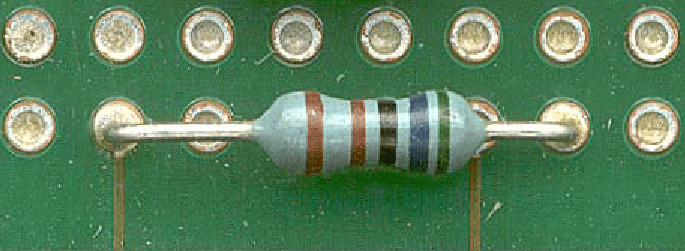
Figure 2: Through-Hole Resistors
Through-hole resistors are commonly used in applications where durability and higher power dissipation are substantial. These resistors have long metal leads that are threaded through holes in the printed circuit board (PCB) and soldered on the other side, creating a strong, lasting connection. Through-hole resistors come in two main shapes:

Figure 3: Axial Resistors
In this traditional style, the leads extend from both ends of a cylindrical body. Axial resistors are preferred for hand-soldering and prototypes because they are easy to position and handle during assembly. Their shape allows for flexible placement in less structured designs.
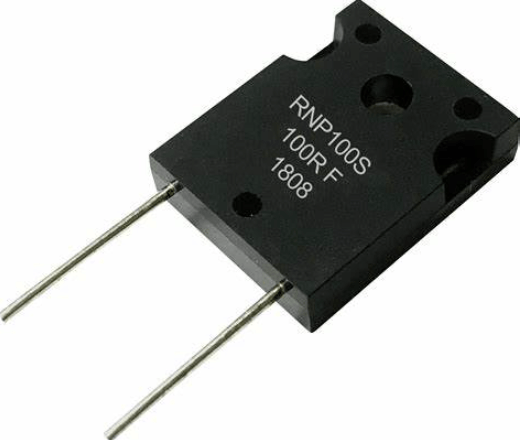
Figure 4: Radial Resistors
Unlike axial resistors, both leads of radial resistors come out from the same side, making them ideal for conserving board space. This compact design allows engineers to fit components closer together, which is helpful in smaller or tightly packed circuits.
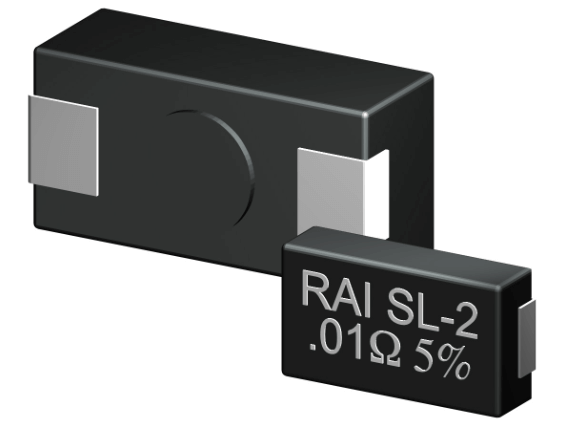
Figure 5: Surface-Mount Resistors
Surface-mount resistors are optimized for modern, automated manufacturing processes. They are smaller than through-hole resistors and are soldered directly onto the surface of the circuit board without the need for drilled holes. These resistors are typically used in mass-produced electronics, where speed, space, and efficiency are priorities. They are available in standardized sizes, such as:

Figure 6: 0603, 0805, 1206
These numbers refer to the dimensions of the resistors, measured in hundredths of an inch. The smaller the number, the smaller the resistor. For example, a 0603 resistor is tiny and ideal for circuits where space is very limited, while a 1206 resistor is larger and can handle more power.

Figure 7: Chip Resistors
A subset of surface-mount resistors, chip resistors are designed to take up minimal space while maintaining functionality. They are often used in densely packed electronic assemblies due to their smaller size. They typically handle less power than through-hole resistors, making them better suited for low-power applications.
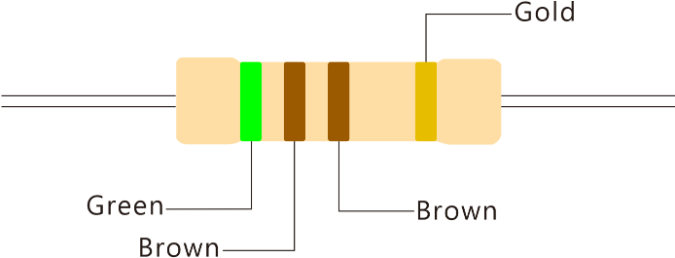
Figure 8: 500 Ohm Resistor Color Code
How to Read the Color Code on 500 Ohm Resistors?
The color coding on a 500 Ohm resistor is a dynamic system that allows for quick identification of its resistance value and tolerance. This coding is useful for ensuring that the correct resistor is used in a circuit, helping engineers and technicians select components based on the circuit's specific requirements.
• Four-Band Color Code: For a 500 Ohm resistor with a standard ±5% tolerance, the color bands follow a simple pattern: green, black, brown, and gold. Each band serves a specific purpose in determining the resistor's characteristics:
• Green (first band): Represents the first digit of the resistance value, which is 5.
• Black (second band): Denotes the second digit, which is 0.
• Brown (third band): Acts as the multiplier, meaning the first two digits (50) are multiplied by 10, giving a total value of 500 Ohms.
• Gold (fourth band): Indicates the tolerance, meaning the resistor's actual value could be within ±5% of 500 Ohms.
• Five-Band Color Code: For circuits that require greater precision, such as sensitive measurement devices or high-performance electronics, a five-band color code may be used. A 500 Ohm resistor with a ±1% tolerance will follow this pattern: green, black, black, brown, and brown. The five-band system provides more accurate readings:
• Green (first band), black (second band), black (third band): These represent the digits 500.
• Brown (fourth band): This is the multiplier, confirming the value as 500 Ohms.
• Brown (fifth band): This indicates a tighter tolerance of ±1%, which is serious for applications where precision is a must.
• Sixth Band: Temperature Coefficient: In some advanced models of resistors, including certain 500 Ohm resistors, a sixth band is present. This band represents the temperature coefficient, which tells you how much the resistor’s value changes with temperature. This feature is particularly significant in environments where the temperature fluctuates, as it helps ensure the resistor remains stable and performs consistently even as temperatures rise or fall. While not always included in standard 500 Ohm resistors, the sixth band is used in specialized applications where temperature sensitivity could affect the overall performance of the circuit.
Comparing 500 Ohm Variable Resistors and Fixed 500 Ohm Resistors
When deciding between a fixed 500 Ohm resistor and a variable resistor (potentiometer), the choice comes down to whether the circuit requires consistent performance or adaptable control. Each type serves distinct purposes in electronic systems, with advantages and trade-offs depending on the specific application.
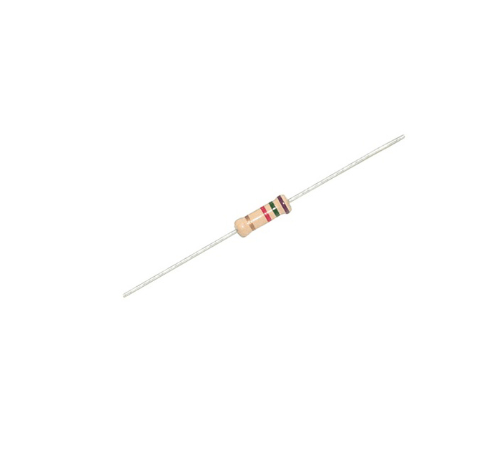
Figure 9: Fixed 500 Ohm Resistor
A fixed resistor provides a stable resistance of 500 Ohms, determined during manufacturing. This constant resistance is ideal for circuits where consistency and predictability are influential. For example, in voltage dividers or biasing networks, the exact resistance ensures precise voltage control and stable operation over time. Because the value is fixed, these resistors are simple to use, highly reliable, and cost-effective. They are most commonly found in environments where conditions remain stable, and the resistor’s role is to maintain specific electrical behavior without any need for adjustment.

Figure 10: Variable 500 Ohm Resistor (Potentiometer)
A variable resistor, or potentiometer , offers adjustable resistance up to 500 Ohms, allowing users to change the resistance as needed. The adjustment is made manually, typically through a dial or slider. This ability to modify the resistance in real-time makes variable resistors ideal for applications where conditions are constantly changing, or user input is required. For example, they are commonly used in audio equipment for adjusting volume or in lighting systems to control brightness. While variable resistors offer flexibility, they also introduce more complexity due to their mechanical parts, and their production costs are generally higher.
Uses of 500 Ohm Resistors in Electronics
500 Ohm resistors play a dynamic role in a wide range of electronic circuits, supporting both analog and digital systems. Their consistent resistance value makes them suitable for tasks like controlling voltage, limiting current, and optimizing signal quality. Below are some key applications where these resistors are used to enhance circuit functionality and ensure reliable operation.
|
Uses of 500 Ohm Resistors in
Electronics |
|
|
Voltage Division |
One of the most common uses for a 500 Ohm
resistor is in voltage divider circuits, where it helps distribute voltage
between different components. By selecting resistors with precise values,
engineers can design circuits that deliver the exact voltage needed for each
component. |
|
Current Limiting |
Another risky application of the 500 Ohm
resistor is current limiting. In many circuits, especially those with
sensitive components like LEDs or microcontrollers, too much current can
cause damage or reduce component lifespan. By placing a 500 Ohm resistor in
series with these components, the current is kept within safe operating
limits, preventing overheating and ensuring the long-term reliability of the
circuit. |
|
Signal Conditioning |
500 Ohm resistors are also ultimate in
signal conditioning, where they help refine and control the characteristics
of electrical signals. In circuits like filters, oscillators, and amplifiers,
these resistors work together with capacitors or inductors to shape signal
frequency, amplitude, and phase. For example, in an audio filter circuit, a
500 Ohm resistor helps block unwanted noise or smooth signal fluctuations,
resulting in clear, high-quality sound or data transmission. |
|
Biasing in Amplifiers |
In transistor and operational amplifier
circuits, 500 Ohm resistors are used to set bias voltages. This is dangerous
in ensuring that amplifiers function in their optimal range, particularly in
audio applications where signal fidelity is noteworthy. The bias resistor
helps stabilize the operating point of the amplifier, reducing distortion and
maintaining a clean, linear output. This makes them requisite in systems
where accurate signal amplification is required. |
|
Impedance Matching in RF Circuits |
In radio frequency (RF) circuits, 500 Ohm
resistors are used for impedance matching to ensure maximum power transfer
and minimize signal reflection. This is especially noteworthy in
high-frequency applications like antenna design or RF amplifiers, where any
impedance mismatch can lead to significant power loss or even damage to the
circuit components. By carefully matching the impedance, these resistors help
maintain efficient performance and protect the circuit from failure. |
|
Digital Circuit Logic |
In digital circuits, 500 Ohm resistors
are often employed as pull-up or pull-down resistors. Their role is to
establish a default logic state on input pins that might otherwise float and
cause erratic behavior. For example, by connecting a 500 Ohm resistor to an
unused input pin of a microprocessor, engineers ensure that the pin reads a
stable logic level, preventing random fluctuations that could disrupt the
system’s operation. |
Different Wattage Options in 500 Ohm Resistors
The wattage rating of a 500 Ohm resistor is a serious specification that defines how much power it can safely handle. This rating not only the physical size of the resistor but also its suitability for different applications. 500 Ohm resistors are available in a range of wattages, each designed for specific operational needs in electronic circuits.

Figure 11: 1/4-Watt Resistor
A 1/4-Watt resistor is one of the smallest in terms of power dissipation, making it ideal for low-power applications. It is often used in compact consumer electronics, where space is at a premium, and only a small amount of power needs to be managed. For example, 1/4-watt resistors are commonly found in signal processing circuits within handheld devices, where minimizing size and heat is risky. The small size and lower power capacity help prevent overheating, ensuring the circuit remains stable over time.

Figure 12: 1/2-Watt Resistor
A 1/2-Watt resistor strikes a balance between size and power handling. It is suitable for applications that require moderate power dissipation but still benefit from relatively compact components. These resistors are often used in automotive electronics and medium-scale consumer devices, where circuit stability is overbearing, but space constraints are not as tight as in smaller gadgets. The 1/2-Watt rating provides enough power handling for most general-purpose circuits while keeping component size manageable.

Figure 13: 1 Watt Resistor
A 1-watt resistor is designed for circuits that need to dissipate more power, such as those found in power supplies and motor control systems. This type of resistor is larger because it must handle higher thermal loads without failing. The increased size allows it to safely manage significant voltage drops and moderate currents, ensuring that heat generated during operation is dissipated effectively. In applications where power stability and reliability are insistent, the 1-watt resistor is a dependable choice.
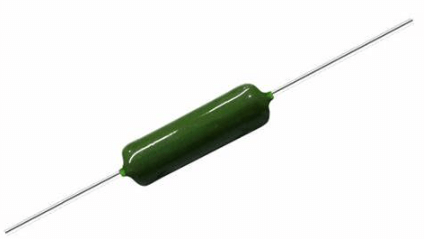
Figure 14: 5-Watt Resistor
At the higher end of the spectrum, a 5-watt resistor is used in high-power applications. These include industrial machinery, power amplifiers, and heavy-duty power supplies. A 5-watt resistor is physically larger to accommodate the increased heat dissipation required when dealing with high voltages or currents. Often, these resistors come with additional features, such as ceramic housings or heat sinks, to further enhance their ability to manage heat and prevent damage to the circuit. In demanding environments, a 5-watt resistor provides the needed power capacity and durability.
Benefits of Using 500 Ohm Resistors
500 Ohm resistors are highly valued in the world of electronics for their ability to precisely control current, their compatibility with a wide range of devices, and their reliable performance across various power levels. These resistors are desperate in both commercial products and industrial systems due to several key advantages.
|
Benefits of Using 500 Ohm Resistors |
|
|
Precision Control |
One of the most significant benefits of a
500 Ohm resistor is its ability to provide precise control over electrical
current. By stabilizing current flow, they reduce the risk of performance
issues or damage caused by unexpected current fluctuations, making them beneficial
for maintaining the overall safety and functionality of electronic systems. |
|
Broad Compatibility |
500 Ohm resistors are designed for broad
compatibility across a wide variety of electronic devices, from basic
consumer gadgets to more complex industrial machines. Their standardized
resistance value allows them to be easily incorporated into different circuit
designs without requiring extensive modifications. This versatility
simplifies the design process and allows these resistors to be used in a wide
array of applications. |
|
Flexibility Across Power Levels |
These resistors are available in multiple
wattage ratings, making them suitable for use in both low-power and
high-power circuits. Whether used in small consumer electronics or larger
industrial systems, 500 Ohm resistors can handle various power dissipation
needs. This flexibility means they can adapt to different types of
technology, ensuring that they meet the specific power requirements of each
application. |
|
Durability in Harsh Environments |
500 Ohm resistors are built to perform in
challenging environments, withstanding extreme temperatures, high humidity,
and mechanical stress. Their ability to operate reliably under harsh
conditions makes them an excellent choice for outdoor installations,
industrial equipment, and other demanding environments where long-term
durability is a priority. This robustness ensures that the electronic systems
they are part of remain stable and operational, even in less-than-ideal
conditions. |
Factors to Consider When Working with 500 Ohm Resistors
When integrating 500 Ohm resistors into electronic circuits, several substantial factors must be carefully evaluated to ensure the resistor performs reliably and contributes to the overall stability of the system. These factors include the resistor’s electrical properties, environmental conditions, and practical maintenance concerns.
|
Factors to Consider When Working with
500 Ohm Resistors |
|
|
Power Dissipation |
A key consideration when selecting a 500
Ohm resistor is its ability to dissipate power. The resistor’s wattage rating
should align with the energy it will need to handle in the circuit. If the
power rating is too low, the resistor could overheat, leading to failure or
even damaging other components. For example, a resistor used in a high-power
amplifier circuit requires a higher wattage rating than one used in a
low-power signal processing circuit. Proper wattage selection helps prevent
overheating and ensures long-term reliability. |
|
Temperature Stability |
The operating environment’s temperature
can greatly affect a resistor’s performance. The temperature coefficient of a
resistor tells you how much its resistance will change as the temperature
varies. In circuits exposed to significant temperature changes, selecting a
500 Ohm resistor with a low-temperature coefficient ensures that the
resistance remains stable. This is particularly significant in applications
where precision is major, as fluctuations in resistance could impact the
entire circuit’s functionality. |
|
Tolerance Precision |
The tolerance level of a resistor
indicates how much its actual resistance may deviate from the specified
value. Circuits that demand high precision, such as those in medical devices
or measurement instruments, require resistors with tight tolerance (e.g.,
±1%). A lower tolerance ensures that the resistor’s value remains close to
the intended 500 Ohms, preventing small deviations from negatively impacting
circuit performance. |
|
Voltage Handling |
The voltage rating of a resistor is
another serious factor. This rating determines how much voltage the resistor
can safely handle before risking failure.Underestimating
this requirement can lead to resistor breakdown and potential damage to the
circuit. |
|
Troubleshooting and Maintenance |
Regular maintenance and troubleshooting
can extend the lifespan of a 500 Ohm resistor and prevent issues that could
affect circuit performance. Common problems include excess heat generation,
resistance changes, and soldering defects. Techniques such as using thermal
imaging to detect overheating, testing resistance values with a precise
multimeter, and visually inspecting solder joints can help identify and
resolve these issues. Proactive maintenance ensures that the resistors
continue to function as expected, reducing the risk of circuit failure. |
|
Sourcing and Storage |
Procurement of 500 Ohm resistors should
be done from reputable suppliers to ensure quality and compatibility with
your circuit. Bulk purchases can offer cost savings, but it’s noteworthy to
manage inventory carefully. Over time, resistors can degrade if not stored in
optimal conditions. To prevent this, resistors should be kept in environments
where humidity and temperature are controlled. Proper storage conditions help
maintain the integrity of the resistor's elements and leads, ensuring they
perform reliably when needed. |
Conclusion
The 500 Ohm resistor exemplifies an ultimate yet profoundly impactful component in the electronics industry, offering precision control over electrical currents and voltage within circuits. Its detailed analysis reveals that it is not only mainly for basic tasks like voltage division and current limiting but also for advanced applications such as signal conditioning and biasing in amplifiers. By analyzing the various attributes and configurations of the 500 Ohm resistor—from power ratings and packaging options to tolerance levels and temperature coefficients—engineers and technicians can optimize electronic circuit designs to achieve higher reliability and efficiency.
In addition, the discussion on the serious factors for employing these resistors, such as power dissipation, voltage handling, and environmental stability, underscores their robustness in facing the demanding conditions of modern electronic environments. Thus, the 500 Ohm resistor remains a staple in electronics, its utility reflecting the intricate balance of precision engineering and practical application in today's technologically driven world.
Frequently Asked Questions [FAQ]
1. What is the purpose of the 500-ohm resistor?
A 500-ohm resistor is typically used to limit current in a circuit, ensuring components receive only the amount of current they can safely handle. For example, it might be used to set the current flowing through an LED or to act as a pull-up resistor in digital electronics, providing a known state in a circuit when switches are open.
2. What is the advantage of resistor color code?
The resistor color code simplifies the identification of resistor values through bands of colors painted on the resistor. This is quicker and more practical than measuring resistance values with a meter every time, especially when dealing with multiple resistors in circuit troubleshooting or assembly.
3. What is the value of brown black brown gold resistors?
A brown, black, brown, and gold resistor has a value of 100 ohms with a tolerance of ±5%. The first two brown bands represent the digits '1' and '0', the third brown band indicates the multiplier (×10), and the gold band specifies the tolerance.
4. What is the color code for a 500-ohm resistor?
A 500-ohm resistor typically has the color bands green, black, and brown, and a tolerance band (often gold or silver). Green stands for '5', black for '0', and brown is the multiplier (×10).
5. What is a resistor used for?
Resistors are overbearing components in electronic circuits, primarily used to control voltage and current levels. They can set operating points for transistors, divide voltages, limit LED currents, or pull up lines to a high state in digital circuits. This versatility makes them in demand in virtually all electronic devices.
About us
ALLELCO LIMITED
Read more
Quick inquiry
Please send an inquiry, we will respond immediately.

MAN6760 Display Modules: Features, Equivalent, and Applications
on September 12th

74LS76 Dual JK Flip-Flop
on September 11th
Popular Posts
-

What is GND in the circuit?
on January 1th 3036
-

RJ-45 Connector Guide: RJ-45 Connector Color Codes, Wiring Schemes, R-J45 Applications, RJ-45 Datasheets
on January 1th 2606
-

Fiber Connector Types: SC Vs LC And LC Vs MTP
on January 1th 2162
-

Understanding Power Supply Voltages in Electronics VCC, VDD, VEE, VSS, and GND
on November 13th 2065
-

Comparison Between DB9 and RS232
on January 1th 1789
-

What Is An LR44 Battery?
Electricity, that ubiquitous force, quietly permeates every aspect of our daily lives, from trivial gadgets to life-threatening medical equipment, it plays a silent role. However, truly grasping this energy, especially how to store and efficiently output it, is no easy task. It is against this background that this article will focus on a type of coin cell battery that may seem insignificant on the...on January 1th 1754
-

Understanding the Fundamentals:Inductance Resistance, andCapacitance
In the intricate dance of electrical engineering, a trio of fundamental elements takes center stage: inductance, resistance, and capacitance. Each bears unique traits that dictate the dynamic rhythms of electronic circuits. Here, we embark on a journey to decipher the complexities of these components, to uncover their distinct roles and practical uses within the vast electrical orchestra. Inductan...on January 1th 1704
-

CR2430 Battery Comprehensive Guide: Specifications, Applications and Comparison to CR2032 Batteries
What is CR2430 battery ?Benefits of CR2430 BatteriesNormCR2430 Battery ApplicationsCR2430 EquivalentCR2430 VS CR2032Battery CR2430 SizeWhat to look for when buying the CR2430 and equivalentsData Sheet PDFFrequently Asked Questions Batteries are the heart of small electronic devices. Among the many types available, coin cells play a crucial role, commonly found in calculators, remote controls, and ...on January 1th 1640
-

What Is RF and Why Do We Use It?
Radio Frequency (RF) technology is a key part of modern wireless communication, enabling data transmission over long distances without physical connections. This article delves into the basics of RF, explaining how electromagnetic radiation (EMR) makes RF communication possible. We will explore the principles of EMR, the creation and control of RF signals, and their wide-ranging uses. The article ...on January 1th 1618
-

Comprehensive guide to hFE in transistors
Transistors are crucial components in modern electronic devices, enabling signal amplification and control. This article delves into the knowledge surrounding hFE, including how to select a transistor's hFE value, how to find hFE, and the gain of different types of transistors. Through our exploration of hFE, we gain a deeper understanding of how transistors work and their role in electronic circu...on November 13th 1561

